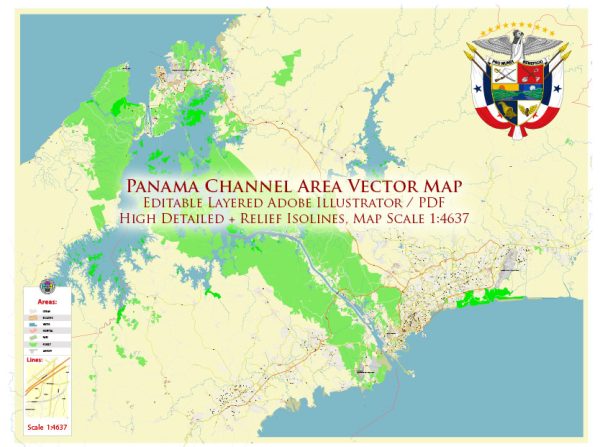The Panama Canal is a famous artificial waterway that connects the Atlantic and Pacific Oceans, allowing ships to bypass the lengthy and dangerous trip around the southern tip of South America. It is a crucial transportation route for global trade. The Panama Canal relies on a combination of natural water resources and a system of locks to manage water levels as ships pass through. Additionally, there are several bridges that span the canal, providing critical transportation links.
- Water Resources:
- Chagres River: The Chagres River is the primary source of water for the Panama Canal. It is a natural river that flows into the artificial Gatun Lake, which is an essential component of the canal’s operation. Gatun Lake serves as a reservoir that stores water and helps maintain the canal’s water levels.
- Locks:
- The Panama Canal uses a system of locks to raise and lower ships as they traverse the canal. The three sets of locks in the canal are:
- Miraflores Locks: These are located at the Pacific end of the canal.
- Pedro Miguel Locks: These are situated further north, along the canal’s route.
- Gatun Locks: These locks are at the Atlantic end of the canal.
- The locks work by controlling the flow of water between different sections of the canal. When a ship enters a lock chamber, water is either added or drained to raise or lower the vessel to the level of the next section of the canal.
- The Panama Canal uses a system of locks to raise and lower ships as they traverse the canal. The three sets of locks in the canal are:
- Bridges:
- There are several bridges that cross the Panama Canal, providing vital transportation links. Some notable ones include:
- Bridge of the Americas (Puente de las Américas): This bridge spans the Pacific entrance to the canal and connects the Panama City to the west side of the canal.
- Centennial Bridge (Puente Centenario): Located further north from the Bridge of the Americas, the Centennial Bridge provides an additional crossing over the Panama Canal.
- Atlantic Bridge (Puente Atlántico): This bridge connects the Atlantic side of the canal with the city of Colón.
- Gatun Lake Crossings: There are several bridges that cross Gatun Lake, facilitating transportation across the canal’s length.
- There are several bridges that cross the Panama Canal, providing vital transportation links. Some notable ones include:
These natural water resources, locks, and bridges all play a crucial role in the operation and navigation of the Panama Canal, making it one of the most significant engineering achievements in the world and a key artery for global maritime trade.


 Author: Kirill Shrayber, Ph.D.
Author: Kirill Shrayber, Ph.D.